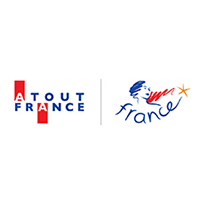Thailand
With its sophisticated roof and 180 glass paintings depicting the Jataka prince, Wat Chong Klang is a prime example of Burmese art. A must-visit temple in Mae Hong Son!
What visitor to Mae Hong Son hasn't enjoyed strolling around the downtown lake? To the right of Wat Chong Kham, the multi-tiered roofs of Wat Chong Klang capture everyone's attention. Dusk is the ideal time to admire them, as the play of light creates a magical atmosphere. The decorative spires of the stupa and viharas reflect in the tranquil waters of the lake. While Wat Chong Kham is known for its colossal 5-meter Buddha, Wat Chong Klang distinguishes itself with a white stupa in the shape of a bell tower, its characteristic pinnacle symbolizing the renunciation of material possessions and aspiration towards spiritual delights. After half an hour of spiritual escape, visitors will agree that Wat Chong Klang is one of the most spectacular legacies of Burmese art in northern Thailand.
Historical notes
The sanctuary was established in the early 19th century when a noble descendant of the Shan ethnic minority was appointed leader of Mae Hong Son. At that time, political relations between Siam and Myanmar were cordial. Many Yai Tai families left the harsh lands of Mandalay to immigrate to Thailand, where the timber trade was lucrative. The village governor entrusted the construction project to the Burmese. The first sanctuary erected was Wat Chong Kham, with Wat Chong Klang following soon after.
Initially, the building was just a charming small pagoda. Further developments occurred with the arrival of a highly revered monk in the village. Siamese kings traditionally honored spiritual leaders lavishly, not with banquets but by spending exorbitant sums on expanding or renovating Buddha temples. Thus, a renovation project took place in the mid-19th century, transforming the modest pilgrimage center into a remarkable edifice that ranks among Thailand's grandest Buddhist temple complexes. The construction took four years, from 1867 to 1871.
Today
Standing by Nong Chong Kham Lake, Wat Chong Klang is breathtakingly beautiful under nighttime illumination. Built entirely of teak, it showcases masterful woodworking skills. Culture enthusiasts must visit this Buddhist monument not only because it glows at night and features superb woodwork, but also because it exemplifies Burmese artistic trends of the 19th and 20th centuries.
Visiting the Buddhist Temple
The sanctuary's facade impresses with its towering gilded roofs. A photo stop is essential before venturing inside.
Key attractions to explore include:
- The white stupa completed in the 20th century, topped with an hti, a characteristic pinnacle of Burmese Buddhist architecture;
- The sala with green roofs;
- A Burmese-style Buddha housed in a niche of the stupa
- Inside the viharn, hundreds of Burmese glass paintings depict the Vessantara Jataka legend, during which Buddha, known as Prince Vessantara, ruled a small Indian kingdom during his earthly life;
- Adjacent to the viharn, a museum featuring around thirty wooden sculptures depicting animals, kings, queens, and various characters from Jataka tales. These sculptures were acquired in 1969 from Burmese sculptors for a considerable sum.
Practical information
Price and opening hours
Free entry for tourists, whether local or foreign. The temple is open daily from 8 a.m. to 6 p.m.
The best time to visit
Mae Hong Son enjoys a warm and humid climate, tempered by its altitude. The best times to visit are during the first or last quarter of the year. Temperatures rise quickly from March onward, peaking in April.
How to get there
Easily accessible, Wat Chong Klang is located in the heart of Mae Hong Son town, near Nong Chong Kham Lake and the temple of the same name. Various transportation options are available:
- Public Transport: Budget-conscious tourists can take a cyclo-pousse or songthaew (two-row bus) from the town to reach the temple;
- Private Transport: Renting a car with a driver is ideal for more discerning tourists;
- Organized Transport: Many travel agencies and tour operators offer group transport to Wat Chong Klang, often combined with visits to other city landmarks.
Nearby attractions
Have you enjoyed your visit to Wat Chong Klang? Nearby, other temples worth exploring include:
- Wat Chong Kham, just to the left of the aforementioned temple;
- Wat Phra That Doi Kong Mu, commanding a superb view over the city from a rocky hill;
- Wat Huai Pha.

